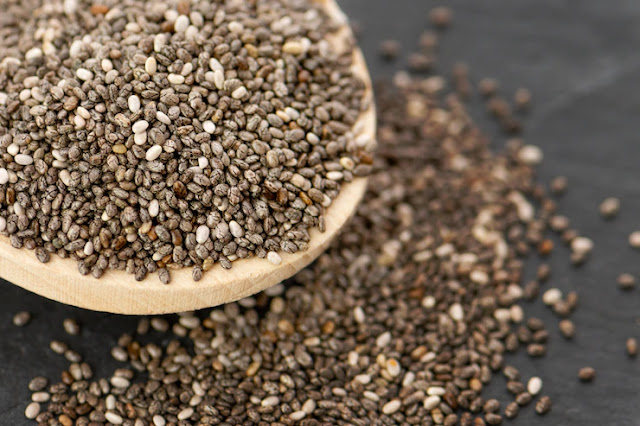What exactly are high-fiber-rich foods? How does it differ from low-fiber foods?
Fiber is found naturally in whole grains, fruits, vegetables, beans, nuts, seeds, and legumes. It helps reduce cholesterol and reduce the risk of heart disease. The U.S. Food and Drug Administration (FDA) recommends adults get at least 25 grams of fiber per day. High-fiber foods contain 4 grams or more of fiber per serving. They include whole grain breads, cereals, pasta, rice, and other starchy foods.
Low-fiber foods contain less than 3 grams of fiber per serving. These include white breads, crackers, cookies, chips, and processed meats. So, let’s see what exactly fiber-rich foods are.
Best high fiber-rich foods
1. Hemp seeds
Hemp seeds are considered to be high in protein, omega-3 fatty acids, iron, zinc, and vitamin E. These seeds have recently been gaining popularity due to their nutritional value and the fact that they don’t require much processing compared to some other cereals.
You can eat hemp seeds raw, ground into flour, sprouted, roasted, rolled, pressed, popped, or even made into milk! You can easily make a smoothie out of them using bananas, fruit juice, almond milk, and hemp seeds.
2. Flax/Linseed Seeds
Flaxseeds are rich in vitamin B, dietary fiber, and lignans. Linseeds are similar to flaxseeds; however, linseeds are higher in fat content (the oil) making them easier to digest than flaxseeds. Both flax and linseeds can be eaten plain, added to baked goods, or rolled into meatballs.
3. Pumpkin Seeds
Pumpkin seeds are packed full of healthy fats and vitamins A and D. Unlike sunflower seeds, these seeds tend to be bland. If you want pumpkin seeds to taste good, try roasting them before eating. Roasted pumpkin seeds are delicious as well as nutritious.
4. Chia Seeds
Chia seeds are extremely high in omega-3 fatty acids and antioxidants. They’re often referred to as a superfood. You only need one tablespoon of chia seeds per day. Chia seeds can be ground into a meal and sprinkled onto cereal, mixed into yogurt, or simply eaten by themselves.
5. Pistachios
These nuts are high in protein, healthy fats, fiber, and vitamins B, C, and E. They are a great snack whether you’re snacking by yourself or sharing with friends. Pistachio shells can go right back into the food after shelling.
6. Black Beans
Black beans are known to be high in fiber, minerals, and antioxidants. Be sure to rinse black beans well before cooking to remove any dirt or debris. Black bean hummus is a wonderful way to consume black beans.
7. Oatmeal
Oats are packed full of fiber, vitamins, minerals, and antioxidants including beta-carotene. Add oats to your oatmeal, rice pudding, pancakes, waffles, etc. to add nutrition and flavor.
8. Grains
Fibrous grains are what we need to keep our bodies strong and make us feel full throughout the day. They are high in fiber food and help regulate bowel movements. Fibers allow food to move through the body at a slower pace while keeping the stomach contents full.
In addition, they have been shown to lower cholesterol levels. Examples of fibrous grains include oats, barley, quinoa, brown rice, bulgur wheat, millet, buckwheat, and amaranth.
9. Beans & Legumes
Legumes and beans are highly nutritious and provide protein, calcium, iron, and zinc. These vegetables also increase our fiber intake. When combined with whole grain cereals, legumes, and beans can make delicious breakfast options. Examples include navy beans, lentils, chickpeas, black-eyed peas, pinto beans, lima beans, fava beans, and soybeans.
10. Leafy Greens
Leafy greens are packed with vitamins and minerals that boost energy, improve digestion, and reduce risks of heart disease. A good example of a leafy green is spinach. Other examples include collards, kale, mustard greens, turnip greens, bok choy, arugula, romaine lettuce, escarole, endive, and radicchio.
11. Tomatoes
These are loaded with lycopene – a powerful antioxidant that may protect against certain types of cancer. Tomatoes are a great way to get more fruit and veggies into your diet. Most varieties are low in calories and contain plenty of water and vitamin C. Examples include grape tomatoes, cherry tomatoes, Roma tomatoes, beefsteak tomatoes, patty pan squash, Italian plum tomatoes, yellow bell peppers, red onion, and garlic.
12. Nuts
Nuts are a great snack option for satisfying hunger and providing protein. They are also rich in nutrients including antioxidants, fiber, omega fatty acids, and B vitamins. Examples of nuts include almonds, hazelnuts, pecans, cashews, pistachios, walnuts, and Brazil nuts.
13. Dairy
Milk and dairy products are excellent additions to a diet. Milk contains protein, calcium, fats, minerals and vitamins. It’s also fat-free, gluten-free, lactose-free, and sugar-free and comes in many different flavors. Milk helps build strong bones, teeth, muscles, and cartilage.
You can add whole grains, legumes, dairy products, and nuts to your daily diet. A balanced diet is the main key to fulfilling the fiber needs of your body. Drink enough water to better the digestion of food.
As per FDA different berries like raspberries, and blackberries are the most fiber-rich foods.
It depends, however, 25 gm for females and 38 gm for males is good enough for optimal health.
There are numerous health benefits of fiber-rich foods such as helping to improve digestion, helps to decrease cholesterol levels, reduce heart-related diseases, help to maintain a healthy weight
Yes absolutely, it is loaded with fiber and water, which is very helpful for digestion.















